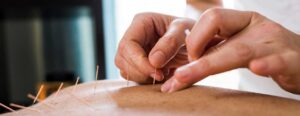At Neurolief, we engage and speak with migraine patients who share their journey on a daily basis, whether through e-mail, social media, or at community events. One common theme is how tired they are of relying on prescription medications to manage migraine pain, only to be left dealing with unwanted side effects and limited relief.
As someone living with migraine disease, you know all too well the debilitating impact this neurological condition can have on your daily life, from missed workdays to strained relationships. But there are powerful, drug-free strategies that can effectively reduce migraine symptoms and improve your overall quality of life.
In this blog post, we’ll dive into five innovative approaches that are revolutionizing the way migraine patients and doctors approach pain management. Get ready to discover a world of holistic, non-pharmacological solutions that can help you take control of your migraines once and for all.
 Neuromodulation
Neuromodulation
Neuromodulation is an emerging technology that has shown great promise in managing migraine pain. Relivion MG is a groundbreaking, FDA cleared, non-invasive neuromodulation system designed specifically for migraine relief. By targeting both the occipital and trigeminal nerves, which are known to play a significant role in migraine pathology, Relivion MG delivers precise, gentle electrical impulses to modulate nerve activity and reduce pain signals.
What sets Relivion MG apart is its unique halo design that comfortably sits around the head, providing comprehensive nerve stimulation. Clinical studies have demonstrated its effectiveness in reducing migraine pain intensity and duration, with many users reporting a pleasant, soothing sensation during treatment. As a drug-free option, Relivion MG offers a safe and convenient way to manage migraine symptoms without the risk of side effects associated with medications.

Stress Management Techniques
Stress is a common trigger for migraines, and managing stress levels can be a powerful tool in reducing the frequency and intensity of attacks. Incorporating stress management techniques into your daily routine can help you relax, reduce tension, and minimize the impact of stress on your migraines.
Deep breathing exercises, progressive muscle relaxation, and mindfulness meditation are all effective ways to promote relaxation and alleviate stress. Taking short breaks throughout the day to practice these techniques can help you stay centered and calm, even during challenging situations. Additionally, engaging in activities you enjoy, such as hobbies, spending time with loved ones, or exercising, can help reduce stress and improve your overall well-being.
Regular Exercise
Exercise is not only beneficial for overall health but can also be an effective strategy for managing migraine pain. Engaging in regular physical activity can help reduce the frequency and intensity of migraine attacks by promoting the release of endorphins, the body’s natural pain relievers.
Low-impact exercises like walking, swimming, or yoga are often well-tolerated by migraine sufferers. These activities can help improve circulation, reduce muscle tension, and promote relaxation. Aim to incorporate at least 30 minutes of moderate exercise into your daily routine, gradually increasing the intensity and duration as your fitness level improves. Be sure to listen to your body and avoid overexertion, which can sometimes trigger migraines.
 Better Sleep
Better Sleep
Maintaining a consistent sleep schedule is crucial for migraine management. Aim to get 7-9 hours of quality sleep each night and try to stick to a regular sleep-wake cycle, even on weekends. Staying hydrated by drinking plenty of water throughout the day can also help prevent migraines triggered by dehydration.
 Complementary Therapies
Complementary Therapies
Acupuncture, massage, and herbal remedies, can be valuable additions to a comprehensive migraine management plan. These therapies work alongside conventional treatments to provide additional relief and support overall well-being.
Acupuncture, a traditional Chinese medicine practice, involves the insertion of thin needles into specific points on the body to promote healing and alleviate pain. Some studies have suggested that regular acupuncture sessions can reduce the frequency and intensity of migraine attacks.
Massage therapy can help alleviate muscle tension, reduce stress, and promote relaxation, all of which can be beneficial for migraine sufferers. Focusing on the neck, shoulders, and head, a skilled massage therapist can help release tension and improve circulation in these areas.
Certain herbal remedies, such as feverfew and butterbur, have shown promise in reducing migraine frequency and severity. However, it’s essential to consult with a healthcare professional before starting any herbal supplement regimen to ensure safety and avoid potential interactions with other medications.
Making simple lifestyle modifications can also go a long way in managing migraine symptoms. Identifying and avoiding common migraine triggers, such as certain foods, bright lights, or loud noises, can help reduce the frequency of attacks.
Adopting a balanced, nutrient-rich diet that includes plenty of fruits, vegetables, lean proteins, and whole grains can help support overall health and potentially reduce migraine frequency. Some migraine sufferers find that keeping a food diary can help identify potential dietary triggers, such as aged cheeses, processed meats, or artificial sweeteners.
Conclusion
For migraine patients and doctors alike, exploring drug-free strategies for managing migraine pain can open up a world of possibilities. By incorporating innovative approaches like neuromodulation with Relivion MG, stress management techniques, regular exercise, lifestyle modifications, and complementary therapies, migraine sufferers can take a proactive stance in their pain management journey.
Healthcare professionals should stay informed about the latest advancements in drug-free migraine treatments to help provide patients with a well-rounded, holistic approach to care. By offering guidance and support in implementing these strategies, they can empower patients to take control of their migraines and improve their overall quality of life.
Remember, managing migraine pain is a highly individualized process, and what works for one patient may not work for another. Encourage open communication, regularly assess treatment outcomes, and be willing to adapt the management plan as needed. By working together and embracing drug-free strategies, migraine patients and doctors can pave the way for a future where migraines no longer hold the power to dictate one’s daily life.

 Neuromodulation
Neuromodulation
 Better Sleep
Better Sleep Complementary Therapies
Complementary Therapies